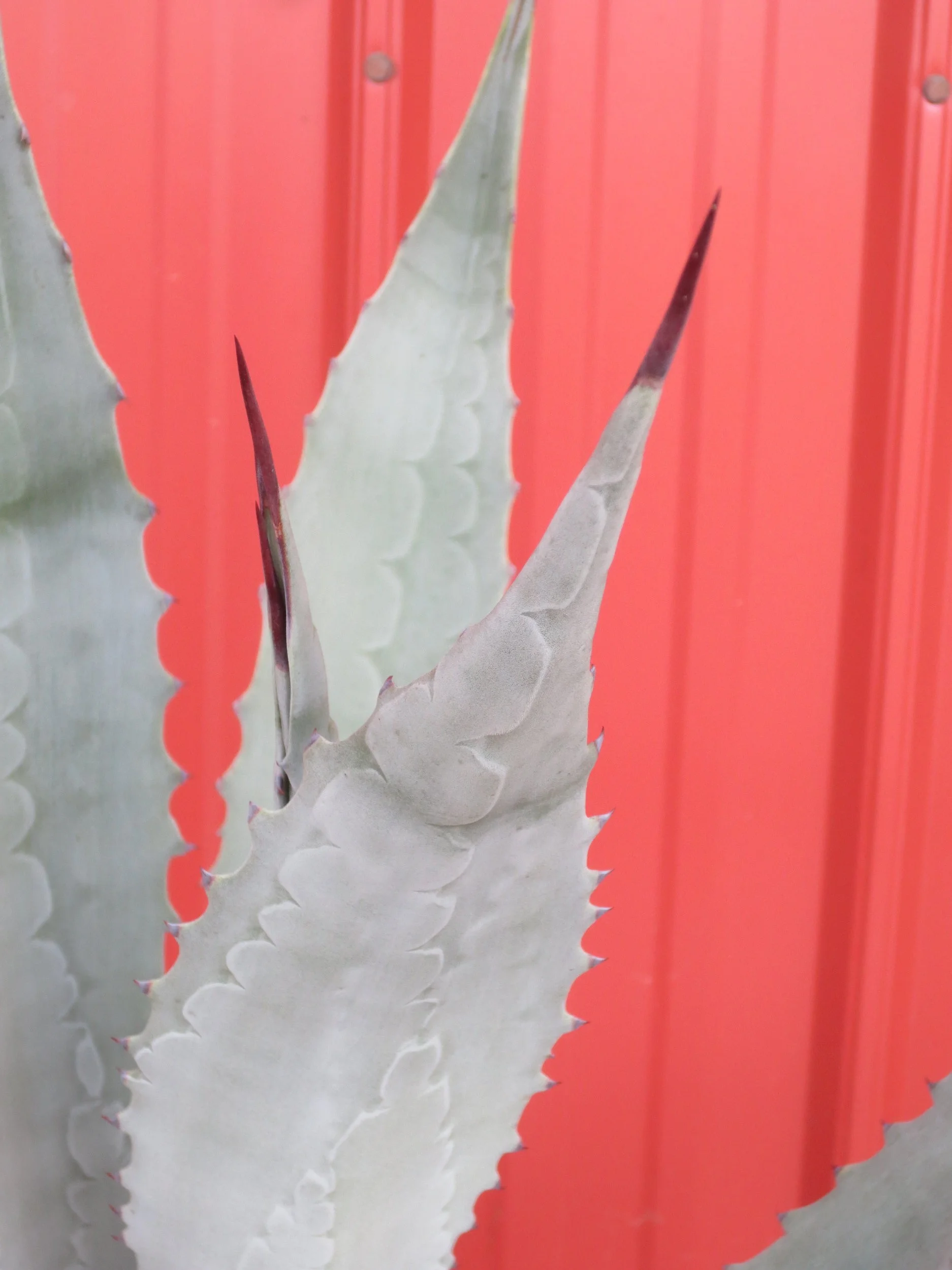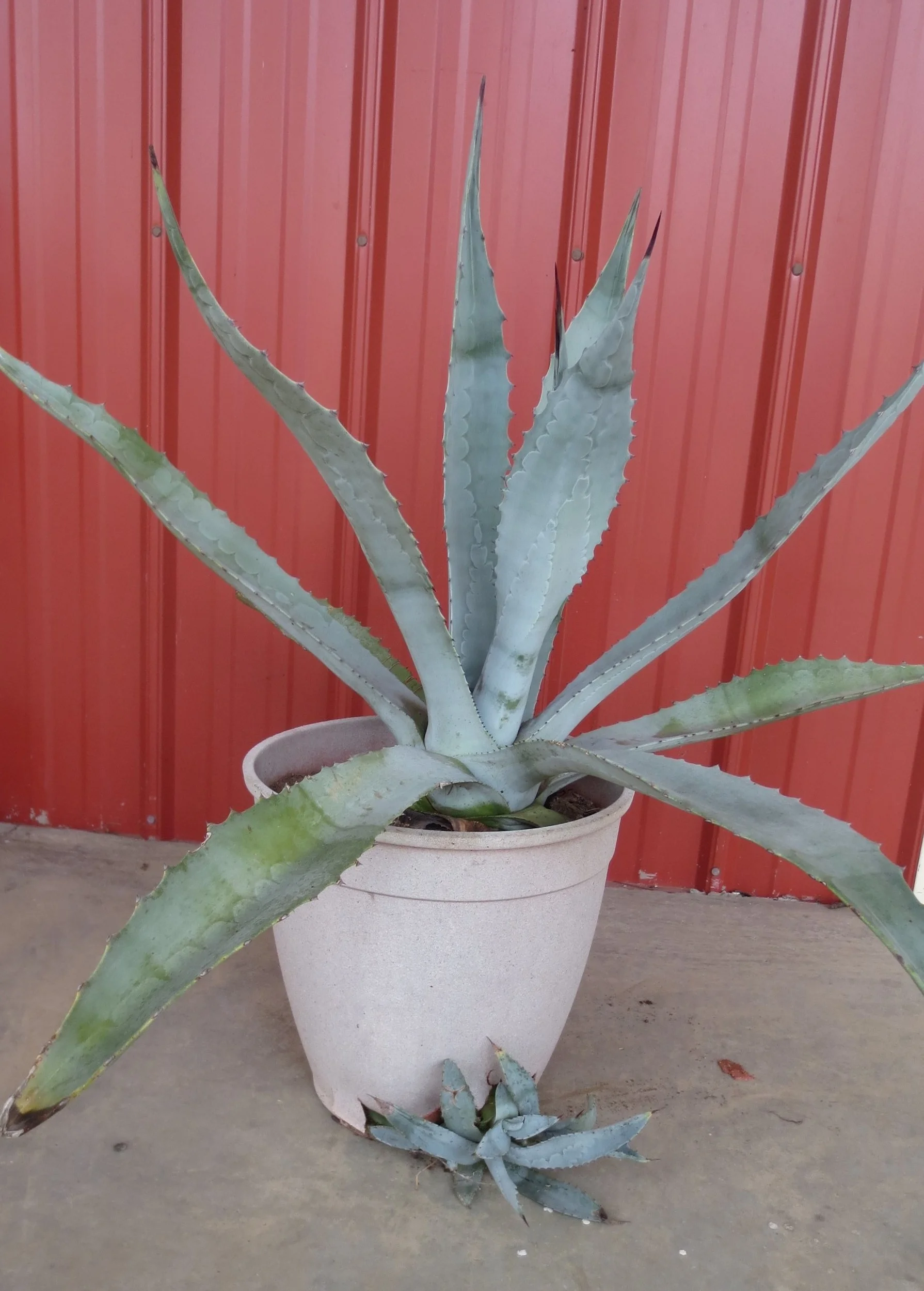As I mentioned in last week’s post, I have an affection for plants with thorns. One of the prickly stars in the Mary Snoddy garden is Agave, commonly known as Century Plant. Agaves are succulents with thick, fleshy leaves arranged in a rosette form. Some have smooth edge leaves but most are serrated. A few have variegated leaf margins. The Agave’s bold leaf appearance makes it a good focal point. To avoid injury, keep it away from walkways. I use wire cutters to remove the tips of the leaf spines.
Several years ago, I purchased my first Agave. I promptly lost the plant identification tag, so I have no idea of the cultivar but do remember it was marked cold hardy to Zone 7. It has beautiful, gray-green leaves tipped with razor-sharp spines. In a few years, it grew quite large and threw off a number of side-shoots, or “pups.” Pups can be separated from the mother plant with a sharp knife. Allow the cuts to dry and callous a few days before potting them up. I gave away most of my offsets, but placed one in a small container. I assumed that the limited root space in a pot would also restrict the plant’s size. I underestimated the strength of the plant. It filled the pot with roots and even managed to throw a new plant from a drainage hole near the bottom. (See the accompanying photo.)
Agaves are in the lily family. They are native to the southwestern US and Mexico. They enjoy sun and heat, and will suffer if temperatures drop into the teens. They need very little water and will rot if allowed to be too wet, especially in cold weather. They do well in rock gardens. If grown in containers, a porous potting soil such as a cactus mix is best.
The common name Century Plant comes from the mistaken belief that a plant must be 100 years old before it blooms. The truth is that plants may bloom after ten years or so. The mother plant dies after blooming.
Agave’s claim to fame comes from its byproduct. The fermented leaf juice is distilled into Tequila.
These spines are needle sharp. Note the leaf serrations and the beautiful shading.
Using a small container to restrict plant size was a pointless exercise. The plant is stronger than the plastic walls of the planter.

